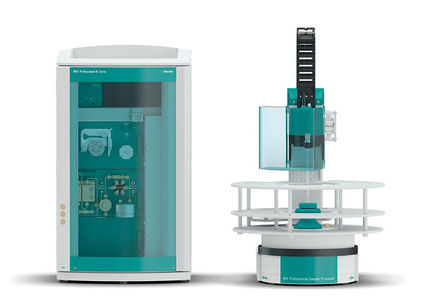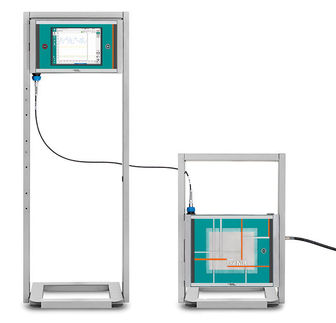| 5-hydroxytryptamine (serotonin) receptor 2A
|
| Identifiers
|
| Symbol(s)
| HTR2A; 5-HT2A; HTR2
|
| External IDs
| OMIM: 182135 MGI: 109521 Homologene: 68073
|
| Gene Ontology
|
| Molecular Function:
| • rhodopsin-like receptor activity
• receptor activity
• serotonin receptor activity
|
| Cellular Component:
| • integral to plasma membrane
• membrane
• integral to membrane
|
| Biological Process:
| • signal transduction
• G-protein coupled receptor protein signaling pathway
• serotonin receptor signaling pathway
• synaptic transmission
|
|
| RNA expression pattern
|
|
More reference expression data
|
| Orthologs
|
|
| Human
| Mouse
|
| Entrez
| 3356
| 15558
|
| Ensembl
| ENSG00000102468
| ENSMUSG00000034997
|
| Uniprot
| P28223
| Q543D4
|
| Refseq
| NM_000621 (mRNA)
NP_000612 (protein)
| NM_172812 (mRNA)
NP_766400 (protein)
|
| Location
| Chr 13: 46.31 - 46.37 Mb
| Chr 14: 73.37 - 73.44 Mb
|
| Pubmed search
| [1]
| [2]
|
The mammalian 5-HT2A receptor is a subtype of the 5-HT2 receptor which belongs to the serotonin receptor family and is a G protein coupled receptor (GPCR). This is the main excitatory receptor subtype among the GPCRs for serotonin (5-HT), although 5-HT2A may also have an inhibitory effect on certain areas such as the visual cortex and the orbitofrontal cortex. This receptor was given importance first as the target of psychedelic drugs like LSD. Later it came back to prominence because it was also found to be mediating, at least partly, the action of many antipsychotic drugs, especially the atypical ones.
5-HT2A also happens to be a necessary receptor for the spread of the human polyoma virus called JC virus.
History
Serotonin receptors were split into two classes by Gaddum and Picarelli when it was discovered that some of the serotonin-induced changes in the gut could be blocked by morphine, whilst the remainder of the response was inhibited by dibenzyline leading to the naming of M and D receptors respectively. 5-HT2A is thought to correspond to what was originally described as D subtype of 5-HT receptors by Gaddum and Picarelli [1]. In the pre-molecular-cloning era when radioligand binding and displacement was the only major tool, spiperone and LSD were shown to label two different serotonin receptors, and neither of them displaced morphine, leading to naming of the 5-HT1, 5-HT2 and 5-HT3 receptors, corresponding to high affinity sites from LSD, spiperone and morphine respectively (?). Later it was shown that the 5-HT2 was very close to 5-HT1C and thus were clubbed together, renaming the 5-HT2 into 5-HT2A. Thus the 5-HT2 receptor family is comprised of three separate molecular entities: the 5-HT2A (erstwhile 5-HT2 or D), the 5-HT2B (erstwhile 5-HT2F) and the 5-HT2C (erstwhile 5-HT1C) receptors.[2]
Distribution
5-HT2A is expressed widely throughout the central nervous system (CNS).
It is expressed near most of the serotoninergic terminal rich areas, including neocortex (mainly prefrontal, parietal, and somatosensory cortex) and olfactory tubercle. There are especially high concentrations of this receptor on the apical dendrites of pyramidal cells in layer V of the cortex that may modulate cognitive processes. In the periphery, it is highly expressed in platelets and many cell types of the cardiovascular system, as well as in fibroblsts, and within neurons of the peripheral nervous system.
Signalling Cascade
The 5-HT2A receptor is known primarily to couple to the Gaphaq signal transduction pathway. Upon receptor stimulation with agonist, Gaphaq and beta-gamma subunits dissociate to initiate downstream effector pathways. Galphaq stimulates phospholipase C (PLC) activity, which subsequently promotes the release of diacylglycerol (DAG) and inositol triphosphate (IP3), which in turn stimulate protein kinase C (PKC) activity and Ca2+ release.[3]
There are many additional signal cascade components that include the formation of arachidonic acid through PLA2 activity, activation of PLD, Rho/RhoK, and ERK pathway activation initiated by agonist stimulation of the receptor.[citation needed]
Effects
Effects of activation of the receptor include:
- CNS: neuronal excitation, behavioural effects, learning, anxiety
- smooth muscle: contraction (in gastrointestinal tract & bronchi)[4]
- vasoconstriction / vasodilatation
- platelets: aggregation
Pharmacology
Agonists
Activation of the 5-HT2A receptor is necessary for the effects of the "classic" hallucinogens like LSD, psilocin and mescaline, which act as full or partial agonists at this receptor. Agonists acting at 5-HT2A receptors located on the apical dendrites of pyramidal cells within regions of the prefrontal cortex are believed to mediate hallucinogenic activity. Recent research has suggested potential signaling differences within the somatosensory cortex between 5-HT2A agonists that produce headshakes in the mouse and those that do not. [5]
N-(2-hydroxy-benzyl)-2C-I and its 2-methoxy-analog are super-affinity agonists at the human 5-HT2A receptor.[6]
Antagonists
Although ergot alkaloids are mostly nonspecific 5-HT receptor antagonists, a few ergot derivatives such as metergoline bind preferentially to members of the 5-HT2 receptor family. A number of antagonists for 5-HT2A/2C are currently available but none are absolutely specific for 2A.
Ketanserin, the prototypic 5-HT2A receptor antagonist potently blocks 5-HT2A receptors, less potently blocks 5-HT2C receptors, and has no significant effect on 5-HT3 or 5-HT4 receptors or any members of the 5-HT1 receptor family. Thus discovery of Ketanserin was a landmark in the pharmacology of 5-HT2 receptors. Ketanserin, though capable of blocking 5-HT induced platelet adhesion, however does not mediate its well known antihypertensive action through 5-HT2 receptor family, but through its high affinity for alpha adrenergic receptors. It also has high affinity for H1 histaminergic receptors. Compounds chemically related to ketanserin such as ritanserin are more selective 5-HT2A receptor antagonists with low affinity for alpha-adrenergic receptors. However, ritanserin, like most other 5-HT2A receptor antagonists, also potently inhibit 5-HT2C receptors.
Nefazadone operates by blocking post-synaptic serotonin type-2A receptors and to a lesser extent by inhibiting pre-synaptic serotonin and norepinephrine (noradrenaline) reuptake.
Atypical antipsychotic drugs like Clozapine, Olanzapine, Quetiapine, risperidone are relatively potent antagonists of 5-HT2A as are some of the lower potency old generation/typical antipsychotics. Other antagonists are MDL-100907 (prototype of another new series of 5-HT2A antagonists) and Cyproheptadine. APD125, a new sleeping pill recently developed by Arena Pharmaceuticals and currently in Phase 2 trials, acts as a selective 5-HT2A antagonist.
Pizotifen is a non-selective antagonist[4]
Partial-agonist Antagonists
Methysergide, a congener of methylergonovine, used in treatment of migraine blocks 5-HT2A and 5-HT2C receptors, but sometimes acts as partial agonist, in some preparations.
Genetics
The 5-HT2A receptors is coded by the HTR2A gene.
In humans the gene is located on chromosome 13.
The gene has previously been called just HTR2 until the description of two related genes HTR2B and HTR2C.
Several interesting polymorphisms have been identified for HTR2A: -1438G/A, T102C and His452Tyr.
Associations with psychiatric disorders
Several studies have seen links between the -1438G/A polymorphism and mood disorders, such as bipolar disorder[7] and major depressive disorder.[8]
A weak link with an odds ratio of 1.3 has been found between the T102C polymorphism and schizophrenia.[9]
One study has found that genetic variations between individuals in the HTR2A gene may to some extent account for the difference in outcome of antidepressant treatment, so that patients suffering from major depressive disorder and treated with Citalopram may benefit more than others if they have one particular genotype.[10]
In this study 768 single nucleotide polymorphism (SNP) across 68 genes were investigated and a SNP—termed rs7997012—in the second intron of the HTR2A gene showed significant association with treatment outcome.
Genetics seems also to be associated to some extent with the amount of adverse events in treatment of major depression disorder.[11][12]
Neuroimaging
The 5-HT2A receptors may be imaged with PET-scanners using the fluorine-18-altanserin[13] and MDL 100,907[14] radioligands that binds to the neuroreceptor, e.g.,
one study reported a reduced binding of altanserin particularly in the hippocampus in patients with major depressive disorder.[15]
Another PET study reported increased altanserin binding in the caudate nuclei in obsessive compulsive disorder patients compared to a healthy control group.[16]
Patients with Tourette's syndrome have also been scanned and the study found an increased binding of altanserin for patients compared to healthy controls.[17]
The altanserin uptake decreases with age reflecting a loss of specific 5-HT2A receptors with age.[18][19][20]
A study has also found a positive correlation among healthy subjects between altanserin binding and the personality trait neuroticism as measure by the NEO PI-R personality questionaire.[21]
In virus endocytosis
5-HT2A also happens to be a necessary receptor for clathrin mediated endocytosis of the human polyoma virus called JC virus, the causative agent of progressive multifocal leukoencephalopathy (PML), that enters cells like oligodendrocytes, astrocytes, B lymphocytes, and kidney epithelial cells. These cells need to express both the alpha 2-6–linked sialic acid component of the 5HT2A receptor in order to endocytose JCV.[22]
References
- ^ Chapter 11, Goodman & Gilman's The Pharmacological Basis of Therapeutics, 11th Edition
- ^ Hoyer D, Hannon J, Martin G (2002). "Molecular, pharmacological and functional diversity of 5-HT receptors". Pharmacol Biochem Behav 71 (4): 533-54. PMID 11888546.
- ^ Urban J, Clarke W, von Zastrow M, Nichols D, Kobilka B, Weinstein H, Javitch J, Roth B, Christopoulos A, Sexton P, Miller K, Spedding M, Mailman R (2007). "Functional selectivity and classical concepts of quantitative pharmacology". Journal of Pharmacology And Experimental Therapeutics 320 (1): 1–13. doi:10.1124/jpet.106.104463. PMID 16803859.
- ^ a b Rang, H. P. (2003). Pharmacology. Edinburgh: Churchill Livingstone. ISBN 0-443-07145-4. Page 187
- ^ Gonzalez-Maeso et al., (2007). Hallucinogens recruit specific cortical 5-HT2A receptor-mediated signaling pathways to affect behavior. Neuron, 53(3), 439-452.
- ^ Braden MR et al. (2006). "Molecular interaction of serotonin 5 HT2A receptor residues Phe339(6.51) and Phe340(6.52) with super-potent N-benzyl phenethylamine agonists". Mol.Pharmacol. 70 (6): 1956–64. PMID 17000863. Full text
- ^ I. S. Chee, S. W. Lee, J. L. Kim, S. K. Wang, Y. O. Shin, S. C. Shin, Y. H. Lee, H. M. Hwang, M. R. Lim (September 2001). "5-HT2A receptor gene promoter polymorphism -1438A/G and bipolar disorder". Psychiatric Genetics 11 (3): 111–114. PMID 11702051.
- ^ Myoung-Jin Choi, Heon-Jeong Lee, Hye-Jin Lee, Byung-Joo Ham, Ji-Hyun Cha, Seung-Ho Ryu, Min-Soo Lee (2004). "Association between Major Depressive Disorder and the -1438A/G Polymorphism of the Serotonin 2A Receptor Gene". Neuropsychopharmacology 49 (1). PMID 14730199.
- ^ J. Williams, G. Spurlock, P. PcGuffin, J. Mallet, M. M. Nothen, M. Gill, H. Aschauer, P. O. Nylander, F. Macciardi, M. J. Owen (1996). "Association between schizophrenia and T102C polymorphism of the 5-hydroxytryptophan type 2a-receptor gene. European Multicentre Association Study of Schizophrenia (EMASS) Group". The Lancet 347: 1294–1296.
- ^ Francis J. McMahon, Silvia Buervenich, Dennis Charney, Robert Lipsky, A. John Rush, Alexander F. Wilson, Alexa J. M. Sorant, George J. Papanicolaou, Gonzalo Laje, Maurizio Fava, Madhukar H. Trivedi, Stephen R. Wisniewski, and Husseini Manji (May 2006). "Variation in the Gene Encoding the Serotonin 2A Receptor Is Associated with Outcome of Antidepressant Treatment". American Journal of Human Genetics 78 (5): 804–814.
- ^ Gonzalo Laje, Silvia Paddock, Husseini Manji, A. John Rush, Alexander F. Wilson, Dennis Charney, and Francis J. McMahon (October 2007). "Genetic Markers of Suicidal Ideation Emerging During Citalopram Treatment of Major Depression". American Journal of Psychiatry 164: 1530–1538. doi:10.1176/appi.ajp.2007.06122018.
- ^ Gonzalo Laje and Francis J. McMahon (December 2007). "The Pharmacogenetics of Major Depression: Past, Present, and Future". Biological Psychiatry 62 (11): 1205–1207. doi:10.1016/j.biopsych.2007.09.016.
- ^ Christian Lemaire, R. Cantineau, M. Guillaume, A. Plenevaux, Leon Christiaens (December 1991). "Fluorine-18-altanserin: a radioligand for the study of serotonin receptors with PET: radiolabeling and in vivo biologic behavior in rats". Journal of Nuclear Medicine 32. PMID 1744713.
- ^ C. Lundkvist, Christer Halldin, N. Ginovart, S. Nyberg, C. G. Swahn, A. A. Carr, F. Brunner, and Lars Farde. "[11C]MDL 100907, a radioligland for selective imaging of 5-ht(2a) receptors with positron emission tomography". Life Science 58 (10): 187–192. PMID 8602111.
- ^ Mark A. Mintun, Yvette I. Sheline, Stephen M. Moerlein, Andrei G. Vlassenko, Yiyun Huang and Abraham Z. Snyder (February 2004). "Decreased hippocampal 5-HT2A receptor binding in major depressive disorder: in vivo measurement with [18F]altanserin positron emission tomography". Biological Psychiatry 55 (3): 217–224. doi:10.1016/j.biopsych.2003.08.015.
- ^ K. H. Adams, E. S. Hansen, L. H. Pinborg, S. G. Hasselbalch, C. Svarer, S. Holm, Tom G. Bolvig & Gitte Moos Knudsen (September 2005). "Patients with obsessive-compulsive disorder have increased 5-HT2A receptor binding in the caudate nuclei". International Journal of Neuropsychopharmacology 8 (3): 391–401. PMID 15801987.
- ^ Steven Haugbøl, Lars H. Pinborg, Lisbeth Regeur, Elsebet S. Hansen, Tom G. Bolwig, Finn Å. Nielsen, Claus Svarer, Lene T. Skovgaardand Gitte M. Knudsen. "Cerebral 5-HT2A receptor binding is increased in patients with Tourette's syndrome". The International Journal of Neuropsychopharmacology. doi:10.1017/S1461145706006559.
- ^ A. Rosier, P. Dupont, J. Peuskens, G. Bormans, R. Vandenberghe, M. Maes, T. de Groot, C. Schiepers, A. Verbruggen, L. Mortelmans (November 1996). "Visualisation of loss of 5-HT2A receptors with age in healthy volunteers using [18F]altanserin and positron emission tomographic imaging". Psychiatry Res. 68 (1): 11–22. PMID 9027929.
- ^ Carolyn Cidis Meltzer and others (November 1998). "educed binding of [18F]altanserin to serotonin type 2A receptors in aging: persistence of effect after partial volume correction". Brain Research 813 (1): 167–171. doi:10.1016/S0006-8993(98)00909-3.
- ^ K. H. Adams, Lars H. Pinborg, Claus Svarer, S. G. Hasselbalch, Søren Holm, S. Haugbøl, K. Madsen, Vibe G. Frøkjaer, L. Martiny, Olaf B. Paulson, Gitte Moos Knudsen (March 2004). "A database of [(18)F]-altanserin binding to 5-HT2A receptors in normal volunteers: normative data and relationship to physiological and demographic variables". Neuroimage 21 (3): 1105–1113. PMID 15006678.
- ^ Vibe G. Frøkjær, Erik Lykke Mortensen, Finn Årup Nielsen, Steven Haugbøl, Lars H Pinborg, Karen H. Adams, Claus Svarer, Steen G. Hasselbalch, Søren Holm, Olaf B. Paulson, Gitte Moos Knudsen. "Frontolimbic Serotonin 2A Receptor Binding in Healthy Subjects Is Associated with Personality Risk Factors for Affective Disorder". Biological Psychiatry. doi:10.1016/j.biopsych.2007.07.009. PMID 17884017.
- ^ Gwendolyn F. Elphick, William Querbes, Joslynn A. Jordan, Gretchen V. Gee, Sylvia Eash, Kate Manley, Aisling Dugan, Megan Stanifer, Anushree Bhatnagar, Wesley K. Kroeze, Bryan L. Roth, and Walter J. Atwood (2004). "The human polyomavirus, JCV, uses serotonin receptors to infect cells". Science 306 (5700): 1380–1383. doi:10.1126/science.1103492. PMID 15550673.
| Transmembrane receptor: G protein-coupled receptors |
|---|
| Class A: Rhodopsin like | Acetylcholine (M1, M2, M3, M4, M5) - Adrenergic (α1 (A, B, D), α2 (A, B, C), β1, β2, β3) - Adrenomedullin - Anaphylatoxin (C3a, C5a) - Angiotensin (1, 2) - Apelin - Bile acid - Bombesin (BRS3, GRPR, NMBR) - Bradykinin (B1, B2) - Cannabinoid (CB1, CB2) - Chemokine - Cholecystokinin (A, B) - Dopamine (D1, D2, D3, D4, D5) - Eicosanoid (CysLT (1, 2), LTB4 (1, 2), FPRL1, OXE, Prostaglandin ((DP (1, 2), EP (1, 2, 3, 4), PGF, Prostacyclin, Thromboxane) - EBI2 - Endothelin (A, B) - Estrogen - Formyl peptide (1, L1, L2) - Free fatty acid (1, 2, 3, 4) - FSH - Galanin (1, 2, 3) - Gonadotropin-releasing hormone (1, 2) - GPR (1, 3, 4, 6, 12, 15, 17, 18, 19, 20, 21, 22, 23, 25, 26, 27, 31, 32, 33, 34, 35, 37, 39, 42, 44, 45, 50, 52, 55, 61, 62, 63, 65, 68, 75, 77, 78, 79, 82, 83, 84, 85, 87, 88, 92, 101, 103, 119, 120, 132, 135, 139, 141, 142, 146, 148, 149, 150, 151, 152, 153, 160, 161, 162, 171, 172, 173, 174, 176, 182) - Ghrelin - Histamine (H1, H2, H3, H4) - Kisspeptin - Luteinizing hormone/choriogonadotropin - Lysophospholipid (1, 2, 3, 4, 5, 6, 7, 8) - MAS (1, 1L, D, E, F, G, X1, X2, X3, X4) - Melanocortin (1, 2, 3, 4, 5) - MCHR (1, 2) - Melatonin (1A, 1B)- Motilin - neuromedin (B, U (1, 2)) - Neuropeptide (B/W (1, 2), FF (1, 2), S, Y (1, 2, 4, 5)) - Neurotensin (1, 2) - Opioid (Delta, Kappa, Mu, Nociceptin, but not Sigma) - Olfactory - Opsin (3, 4, 5, 1LW, 1MW, 1SW, RGR, RRH) - Orexin (1, 2) - Oxytocin - Oxoglutarate - PAF - Prokineticin (1, 2) - Prolactin-releasing peptide - Protease-activated (1, 2, 3, 4) - Purinergics (Adenosine (A1, A2a, A2b, A3), P2Y, (1, 2, 4, 5, 6, 8, 9, 10, 11, 12, 13, 14)) - Relaxin (1, 2, 3, 4) - Somatostatin (1, 2, 3, 4, 5) - Serotonin, all but 5-HT3 (5-HT1 (A, B, D, E, F), 5-HT2 (A, B, C), 5-HT (4, 5A, 6, 7)) - SREB - Succinate - TAAR (1, 2, 3, 5, 6, 8, 9) - Tachykinin (1, 2, 3) - Thyrotropin - Thyrotropin-releasing hormone - Urotensin-II - Vasopressin (1A, 1B, 2) |
|---|
| Class B: Secretin like | Brain-specific angiogenesis inhibitor (1, 2, 3) - Cadherin (1, 2, 3) - Calcitonin - CD97 - Corticotropin-releasing hormone (1, 2) - EMR (1, 2, 3) - Glucagon (GR, GIPR, GLP1R, GLP2R) - Growth hormone releasing hormone - PACAPR1- GPR (56, 64, 97, 98, 110, 111, 112, 113, 114, 115, 116, 123, 124, 125, 126, 128, 133, 143, 144, 157) - Latrophilin (1, 2, 3, ELTD1) - Parathyroid hormone (1, 2) - Secretin - Vasoactive intestinal peptide (1, 2) |
|---|
| Class C: Metabotropic glutamate / pheromone | Calcium-sensing receptor - GABA B (1, 2) - Glutamate receptor (Metabotropic glutamate (1, 2, 3, 4, 5, 6, 7, 8)) - GPRC6A - GPR (156, 158, 179) - RAIG (1, 2, 3, 4) - Taste receptors (TAS1R (1, 2, 3) TAS2R (1, 3, 4, 5, 8, 9, 10, 12, 13, 14, 16, 38, 39, 40, 41, 43, 44, 45, 46, 47, 48, 49, 50)) |
|---|
| Frizzled / Smoothened | Frizzled (1, 2, 3, 4, 5, 6, 7, 8, 9, 10) - Smoothened |
|---|
|







